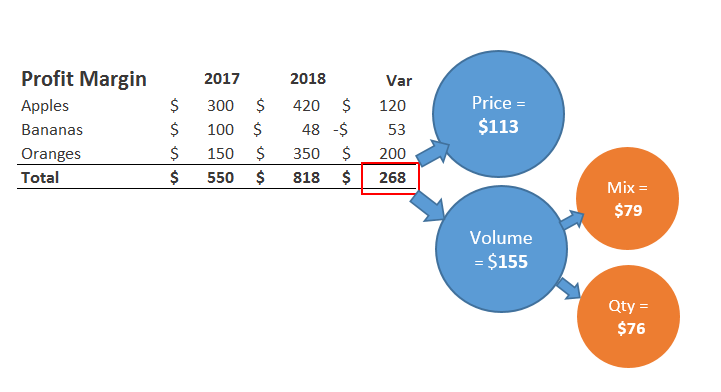Advantages and disadvantages of industrial revolution pros & cons
Category : Forex Trading

Here is an article about the first industrial revolution which goes into details about this era. Even though, without the industrial revolution, several nations today might not be as prosperous. All these changes improved the lives of the working class and poor people. The first industrial revolution took place between 1760 and the early 19th century.

However hard those jobs were, they were often preferable to the precarious existence of a small farming family. The innovations of the 19th century allowed for the mass production of commercial goods. As manufacturing activities grew, transportation, finance, and communications industries all expanded to support the new production capacity. As a result of the ability to manufacture multiple products in any industry or sector, free market economies began to emerge. Anyone could make a name for themselves because of industrialization. The story that often gets told when discussing industrialization is the life of Charles Goodyear.
Poor Working Conditions
The second reason was European imperialism which led to the creation of more raw materials and big markets. Also, the agricultural revolution had a role in the growth of the industrial revolution. This revolution almost affected every aspect of human life in some way. It made changes in both technology and the social structures of societies. From the 1880s to 1970, Japan grew rapidly and became a powerful economic leader by the 1980s. Japan is now highly developed and is the third-largest economy in terms of nominal GDP, just behind the European Union and the United States.
Industrialization may be driven more by foreign direct investment than by domestic direct investment. Thus, while creating jobs and income for local workers, multinational companies transfer some profits to owners in the home country. In addition, demand also came from supporting businesses for the manufacturing sector, especially in the service sector. That ultimately brings more employment and income opportunities into the economy.
For example, in LDCs with low MVA per capita, secondary school enrollment is less than 50 per cent, compared to more than 80 per cent in industrialized countries (2017). There is now a risk that, as a result of the ongoing economic shockwaves from the COVID-19 pandemic, the gap could widen even further. Yes, the economic benefits of industrialization outweigh the economic costs.
Industrialization brought people more money and better access to goods and services, but it also increased the amount of risk that people faced. Employees were expected to put in long shifts, often working 12-hour days with only Sunday off to spend time with their families. If you were sick or got injured, then you’d probably get fired. Farmers who focused on monoculture and people advantages of industrialisation with individual skills were the only specialists in the pre-industrialization economy. Once societies began to focus on manufacturing, this developed allowed families to begin training for jobs that could pay them better. Instead of going through a long apprenticeship or being born into the “right” family, anyone could change their stars by putting in enough hard work.
They had to work in small spaces which could cause back problems from their stance in these conditions. Rocks could fall on the workers at any moment and the elevators were very dangerous to use because they could also breakdown. Floods down in the mines killed miners and also carts running them over caused death. There was also poisonous gas down there and miners would suffer from miner’s asthma (black lungs). It emphasizes efforts to conserve natural resources while sustainably improving the economy. Furthermore, specialization and division of labor allow workers to become more proficient in carrying out their daily tasks.
The Rise of the Machines: Pros and Cons of the Industrial Revolution
Most children had to make money for their family, but were still paid less than adults. They had no childhood or education which made them apart of the percentage of illiterates. While these kids worked, they had to breathe in poor air which would later on give them health defects such as black lungs. Indeed factories can produce more output and enjoy greater economies of scale. However, it requires workers to spend much of their time in jobs with deplorable and dangerous conditions.
South Africa’s six competitive advantages – The Mail & Guardian – Mail and Guardian
South Africa’s six competitive advantages – The Mail & Guardian.
Posted: Fri, 04 Aug 2023 12:45:50 GMT [source]
From food to essential supplies, the population driven by industrialization can get the basic amenities faster. This results in enhanced quality of life as the products required are affordable to everyone. Furthermore, if economic or political conditions deteriorate, foreign investors can withdraw their investment. If the domestic economy is more dependent on foreign investment, these outflows increase the chances of an exchange rate crisis.
Higher labor productivity
In May 2019, 52 out of the 55 AU member countries signed the African Continental Free Trade Area (AfCFTA) agreement, making Africa the largest free trade area in the world. Africa, as a whole, has struggled with extreme global poverty and economic development. AfCFTA aims to unlock Africa’s economic potential and improve the lives of over 1.2 billion people. Although the Ivory Coast has a high poverty rate of 46 percent, its gross domestic product growth rate ranked number 10 out of 224 countries. High GDP growth implies increased productivity, which also leads to industrialization.
- If you were sick or got injured, then you’d probably get fired.
- It was one of the ideas that was developed by the industrial revolution.
- For example, to improve the skills of workers, they need training services.
- These later adopted a laissez-faire or free-market approach that encouraged foreign trade, providing new outlets for industrial output.
Shortage of housing space, traffic issues, and expensive property are some common drawbacks of Industrialization. Instead, workers think more about how to meet their daily needs for any income they receive. So, they are more difficult to allocate more money for investment as capital owners.
However, consumption of fossil fuels at a large scale also causes environmental concerns, including global warming. The industrial sector comes up with new inventions that are both time-saving and less costly. The automated system also leads to fewer errors at manufacturing plants and factories hence boosting the production process. Companies can get the work done by machines rather than depending on human labor. The management can save hugely in terms of resources and utilities spent on labor and workplace hazards.
What Are the Effects of Industrialization? [Positive and Negative Impacts]
To read in more specifics, please check out the ultimate guide to industrial revolution article. When we review the results from our efforts at industrialization, it is clear to see that our world would be a very different place without this innovation. We have access to almost every product we use today because of the work that previous generations put into new ideas, factories, and goods.
South Africa Textile Industry Report 2023: Competitive Advantages in Localized Production Driving Growth and Recovery – Yahoo Finance
South Africa Textile Industry Report 2023: Competitive Advantages in Localized Production Driving Growth and Recovery.
Posted: Fri, 14 Jul 2023 07:00:00 GMT [source]
Everything comes at a cost, and so is the case with industrialization. From environmental concerns to the societal viewpoint, these disadvantages of Industrialization scale differently for every country. Many of the advances that led to the development of modern medical practices happened because of the efforts of the Industrial Revolution. It’s possible to make more instruments, such as test tubes, scalpels, and lab equipment, at a lower cost.
Advantages and Disadvantages of The Industry
Diagnostic equipment that we often take for granted today, such as MRI and CAT scans, wouldn’t be possible without this evolution. Factories made it easier to produce everything from scalpels to new laboratory equipment, making it possible for more people to become doctors, nurses, and caregivers. To sustain one of Africa’s fastest-growing economies, the government is investing more than $7 billion in infrastructure between 2018 and 2023. Most of the investment was directed to the capital and major port city Abidjan.

Some of these changes are the use of iron and steel, new energy sources like coal and steam, and the factory system. This inequality of development leads to resource issues because factories require raw materials to operate. That means the countries without industrialization hold themselves back because they sell the items needed to evolve their economies for short-term gains instead of long-term results.
Later Periods of Industrialization
While some people argue that Industrialization is the wave of the future, others worry about what will happen if we follow this course too far. Like many advancements in history, the Industrial Revolution offers mixed blessings. Employed children under 15 years of age increased in millions from 1870 to 1900s. They couldn’t go to school because they had to work, and the work they were given was adult work. The work and the conditions they worked in were dangerous too.
In addition, when the cities become crowded with people, the living conditions are impacted directly. For example, when masses of people live close together in unsanitary conditions, it is not unusual for diseases to start spreading rapidly. People looking for jobs switch to industrial towns and cities to earn better wages and improve their livelihood.

